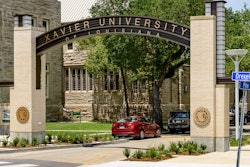Unequal Exposure
Environmental justice advocates mobilize to ensure minority communities are not left out of the Hurricane Katrina cleanup
By Ronald Roach
After losing her New Orleans home to Hurricane Katrina, Dr. Beverly Wright has persevered to keep a vital segment of the environmental justice movement afloat in Louisiana. Not only did Katrina’s flooding displace Wright and her family, it disrupted the relocation of the Deep South Center for Environmental Justice (DSCEJ) an academic and community institute she founded and has directed since 1992. When Katrina hit the Gulf Coast in late August, the center was in the process of moving from one of New Orleans’ historically Black institutions — Xavier University of Louisiana — to another — Dillard University.
“We had been at Xavier for 13 years and we were transferring the center intact from Xavier to Dillard,” says the sociologist. “The bad thing was we were moving as of Sept. 1 and the hurricane came on the 29th [of August].”
The center has operated out of Southern University in Baton Rouge since late September. It stills plans to eventually relocate to Dillard, the hardest hit of all the New Orleans-based college and university campuses. As the city rebuilds, Wright and her colleagues focus on a mission they say cannot wait — the mission of environmental justice.
For nearly three decades, the environmental justice movement has attracted thousands of activists, scholars and ordinary citizens to mobilize on behalf of communities that have been overburdened with hazardous waste sites, petrochemical plants, incinerators, lead contamination, polluted air and contaminated drinking water. In many cases, activists and scholars have produced evidence that minorities have been disproportionately victimized by exposure to toxic wastes by companies that have deliberately built their disposal facilities near minority communities. The practice has been dubbed “environmental racism” by activists.
While Katrina exposed deep-rooted poverty among New Orleans’ Black community, it also illustrated the city’s precarious environmental situation. Sediment from contaminated flood waters has lingered on during the city’s massive cleanup efforts. Federal officials have attributed at least nine major oil spills and numerous smaller oil and hazardous substance spills and leaks to Katrina’s destruction. In addition, an estimated 60 underground storage tanks, hazardous waste storage facilities and industrial facilities, as well as five Superfund sites in New Orleans, were hit by Katrina.















